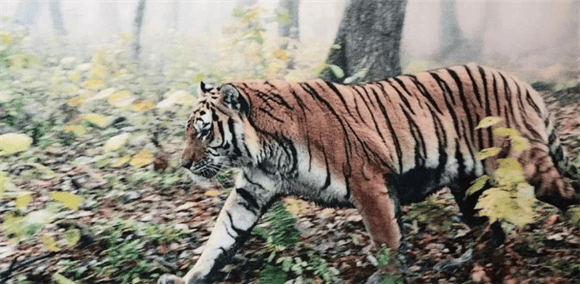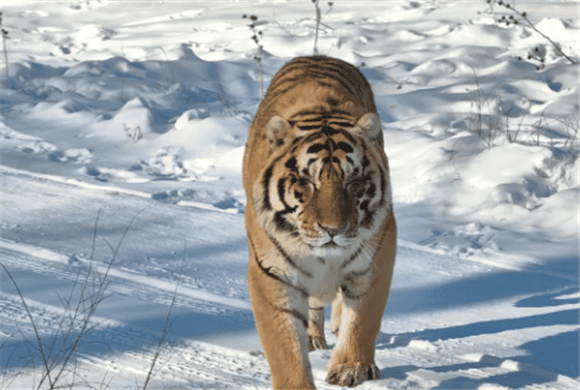The Siberian tiger, also known as the Siberian tiger or the Amur tiger, is a rare and endangered animal in my country. It is listed as an endangered (EN) species by the "International Union for Conservation of Nature (IUCN) Red List". It is a flagship species for biodiversity conservation and An important indicator of the health of temperate forest ecosystems.
As one of the subspecies of tiger, the Siberian tiger is distributed in northeastern Asia, namely the Siberian region of Russia, North Korea and northeastern China. It is the largest carnivorous cat in existence.

On October 5, 2018, one large, four small and five Siberian tigers were captured by an infrared camera in the Siberian Tiger and Leopard National Park.
Male Siberian tigers are generally larger than females, with a body length of generally 2.5 meters and a maximum length of 3 meters. The Siberian tiger's head is large and round, and its body shows a main color of brown, which is intersected with multiple narrow black stripes and white. The pattern on its head is connected by a black horizontal stripe. This is also the origin of its reputation as "King of the Jungle" .
An infrared camera captures wild Siberian tigers in the Siberian Tiger and Leopard National Park.
The Siberian tiger likes to inhabit the Korean pine broad-leaved mixed forest, followed by the broad-leaved mixed forest; it is mainly distributed in the middle and low mountainous areas with an altitude of 150 to 800 meters; it likes to prey on red deer, sika deer, roe deer, wild boar, etc. Hoofed animals.
Due to the endangered situation, the survival and protection of wild tigers have become an international issue in the 20th century.
Currently in China, the only place where wild tiger populations are distributed is in the area where the Northeastern Tiger and Leopard National Park is now located.
The Northeast Tiger and Leopard National Park covers an area of 14,100 square kilometers. It borders Russia’s “Leopard Land” National Park in the east and faces North Korea across the Tumen River in the southeast. The border is 256 kilometers long. Photo by Xu Xun/People's Pictorial
The latest scientific research data from the Siberian Tiger and Leopard Monitoring and Research Center of the State Forestry and Grassland Administration show that the number of wild Siberian tigers in the Siberian Tiger and Leopard National Park has increased from 27 in 2015 to There are currently more than 50. As the food source of Siberian tigers, sika deer has the most obvious growth, with sika deer increasing by 3.5 times, wild boar increasing by 1.9 times, and roe deer increasing by 1 times. Moreover, the adult rate of Siberian tiger cubs has increased from 33% before the pilot to more than 50% currently. The Hunchun area in the hinterland of the Northeast Tiger and Leopard National Park has returned to the "tiger-filled mountains" style.

The Manchurian Tiger and Leopard National Park has initially formed an integrated sky-ground monitoring network of nearly 10,000 square kilometers, and has acquired a large amount of image data of Manchurian tigers, Amur leopards, other wild animals and human activities. Photography Xu Xun/People’s Pictorial
In 2021, two tiger cubs in Hunchun area.
An adult male tiger must have at least one or two thousand large and medium-sized prey in his territory to support the normal reproduction of a tiger family. In temperate areas, especially in forests that have experienced strong human interference, this requires It takes hundreds or even thousands of square kilometers of resources to support so many herbivores. If you want to support the long-term survival of a wild Siberian tiger population, you must have a large-area forest ecosystem with a complete and healthy food chain. Therefore, the ultimate goal of protecting the Siberian tiger is to protect the entire ecological chain of the Northeastern coniferous and broad-leaved mixed forest with the Siberian tiger at the top.

 扫一扫微信交流
扫一扫微信交流
发布评论